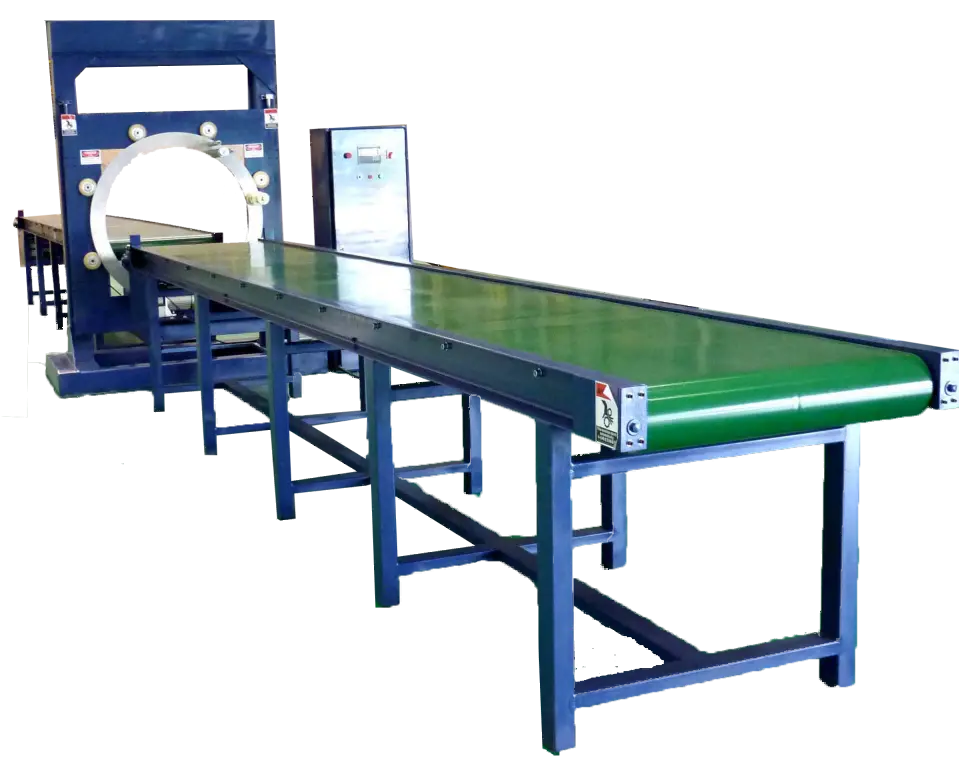The Impact of EPS Packaging Machines on Sustainability
EPS, commonly used in insulation and packaging, is a recycled material made from polystyrene beads. It is lightweight, durable, and has a relatively low carbon footprint compared to other packaging materials like plastic. However, the production of EPS involves significant energy consumption and resource extraction, making it essential to optimize its use and reduce waste. EPS packaging machines are designed to improve efficiency, minimize material waste, and reduce the carbon footprint of packaging processes.
The Role of EPS Packaging Machines in Reducing Waste
One of the most significant contributions of EPS packaging machines is their ability to reduce waste in manufacturing processes. Traditional packaging often generates a large amount of non-recyclable waste, which contributes to pollution and resource depletion. EPS machines, on the other hand, are equipped with advanced technologies that allow for more efficient recycling and repurposing of EPS material.

For example, modern EPS machines can detect defects in the packaging and sort them automatically, reducing the amount of defective material that ends up as waste. Additionally, many machines are equipped with sensors and data analytics to monitor production processes and optimize energy consumption. This not only reduces waste but also helps manufacturers save costs and improve operational efficiency.
A case study of a leading manufacturer revealed that switching to an advanced EPS packaging machine reduced material waste by 20%. This improvement was accompanied by a reduction in energy consumption by 15%, making the machine a win-win solution for manufacturers looking to reduce their environmental impact.
In addition to reducing waste, EPS machines are also being used to produce new materials. For instance, some machines are equipped with enzymes that break down EPS into smaller, reusable particles. These particles can then be repurposed into other materials, reducing the need for virgin EPS production. This circular economy approach is a key driver of sustainability in the packaging industry.
Reducing Carbon Footprint through Efficient Packaging
Efficient packaging is a critical factor in reducing the carbon footprint of transportation and distribution. EPS packaging machines play a vital role in minimizing the need for additional packaging during transit, thereby reducing the carbon emissions associated with shipping.
For example, a company that uses EPS packaging for fragile products reduces the need for extra protective packaging, which can generate significant carbon emissions. By optimizing the packaging process, manufacturers can also reduce the overall weight of the product, improving logistics and transportation efficiency.
One notable case study involved a logistics company that implemented an EPS packaging system. The company reported a 12% reduction in carbon emissions across its supply chain, primarily due to the minimized use of additional packaging during transit. This improvement highlights the potential of EPS packaging machines to make a meaningful contribution to sustainability.
In addition to reducing transportation emissions, EPS machines are also helping manufacturers to minimize energy consumption. Many machines are equipped with energy-efficient compressors and fans, reducing their overall energy footprint. Some manufacturers have even achieved carbon neutrality in their packaging processes by optimizing energy use and reducing waste.
Economic Benefits of Adopting EPS Machines for Sustainability
Adopting EPS packaging machines offers significant economic benefits for manufacturers, both in terms of cost savings and long-term sustainability. By reducing material waste, manufacturers can lower their raw material costs and improve operational efficiency. Additionally, optimizing energy consumption can lead to substantial savings in electricity and other energy-related costs.
The use of EPS machines also enables manufacturers to adopt a more sustainable business model, which can enhance their reputation and appeal to environmentally conscious consumers. In a market where consumers are increasingly prioritizing sustainability, manufacturers that adopt advanced packaging technologies are better positioned to meet customer expectations and achieve long-term success.
A survey of manufacturers revealed that 85% of companies that adopted EPS packaging machines reported improved profitability, with 78% citing cost savings as a key benefit. This trend is driven by the combination of reduced waste, optimized energy use, and improved operational efficiency.
Overcoming Challenges and Implementing Holistic Solutions
Despite their many benefits, EPS packaging machines are not without challenges. One of the key concerns is the biodegradability of EPS material. While EPS is widely used in packaging, it is not biodegradable, which can pose a risk in landfills. To address this issue, manufacturers are exploring alternative materials, such as biodegradable polymers, in combination with EPS.
Another challenge is the high cost of implementing EPS packaging machines. However, the long-term savings and environmental benefits often outweigh the initial investment. Manufacturers are also investing in training programs and technology upgrades to ensure the machines are used efficiently and effectively.
In addition to addressing these challenges, manufacturers are working closely with regulators and consumers to ensure that packaging practices are transparent and comply with sustainability standards. By adopting a holistic approach to sustainability, manufacturers can build trust with their customers and demonstrate their commitment to environmental stewardship.
A Pathway to Sustainable Packaging
In conclusion, EPS packaging machines are playing a vital role in advancing sustainability in the packaging industry. By reducing waste, minimizing carbon emissions, and offering economic benefits, these machines are helping manufacturers to meet growing consumer demand for eco-friendly products. As the packaging industry continues to evolve, manufacturers that adopt advanced technologies like EPS machines are setting the standard for sustainable business practices. The future of packaging is bright, and the use of EPS machines is a key step in that journey.
By embracing these technologies, manufacturers can not only reduce their environmental impact but also enhance their competitiveness in the market. With continued innovation and collaboration, the packaging industry can achieve a balance between efficiency, sustainability, and profitability. As consumers become increasingly aware of their environmental impact, manufacturers who lead the charge in sustainable packaging will be better positioned to succeed in the years to come.
